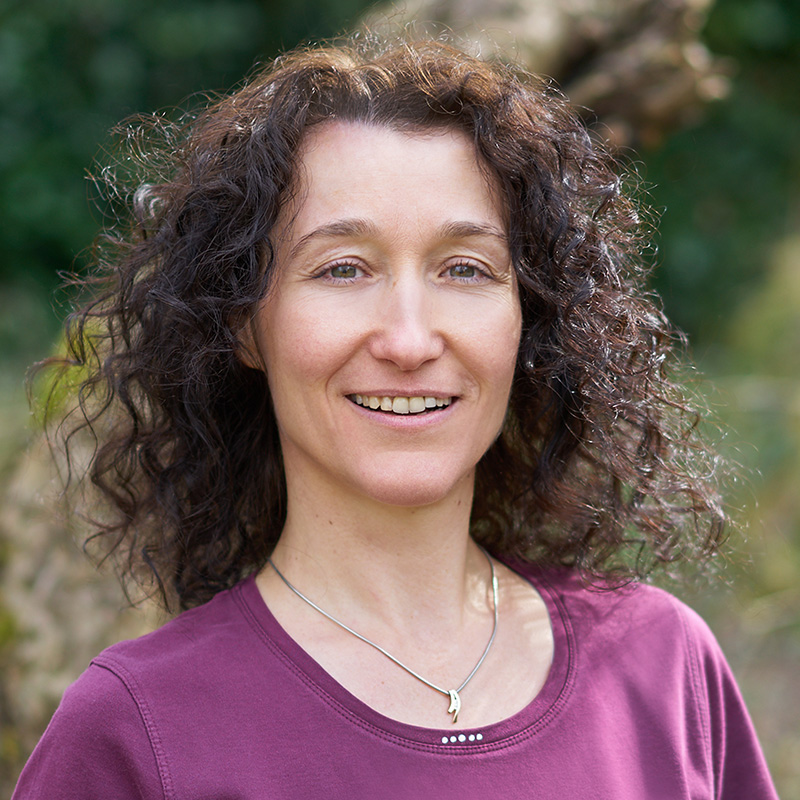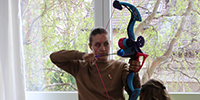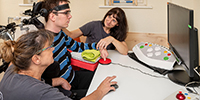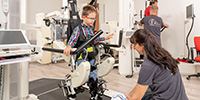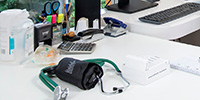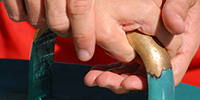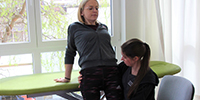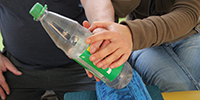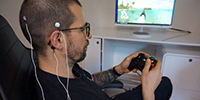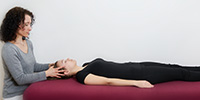Craniosacral therapy
Craniosacral therapy
For the Zentrum der Rehabilitation in Pforzheim
What is craniosacral therapy?
Craniosacral therapy is a holistic and body-oriented form of manual therapy that has its origins in the field of osteopathy. It is based on working with the craniosacral rhythm which can be felt in the fine pulsating of the cerebrospinal fluid and which influences the whole body in a holistic way.
The cerebrospinal fluid nourishes, moves and protects our nervous system from the head (cranium) to the sacrum. The craniosacral rhythm proceeds through the body via the connective tissue and is therefore palpable in the entire body. This is why changes of the craniosacral rhythm have an impact on the whole body system.
How does craniosacral therapy work?
Craniosacral practitioners evaluate the quality of the craniosacral rhythm with their hands. They work with the rhythm and can relieve tensions, pain and mobility impairments. This leads to compensatory movements coming from the body itself and contributing to healing.
Craniosacral practitioners work in a holistic manner and with great care on the physical and cognitive level. They focus on the inherent health and the self-regulating forces within each one of us.
Applications of craniosacral therapy:
- Body awareness training for people suffering from limitations of perception
- Improvement and stimulation of the brain performance in patients with traumatic brain injury
- Recovery in times of stress and exhaustion
- Pain relief for people suffering from headache, muscle pain, joint pain or back pain
- Emotional stabilization for people with mental and physical injuries
- Processing stressful periods of life
- Support for people with psychosomatic problems
Craniosacral therapy does not focus on a high physical performance but an a relaxed and profound change of the entire body-mind system to draw on full power physical and mental reserves again. The experiences with this type of therapy vary from patient to patient. Some patients with paraplegia have the perception that they “can feel their pants on their skin”, others experience a deep relaxation of the muscles during spasms.
Spezifische Anforderungen der Craniosacral-Arbeit hier im Zentrum:
z.B. Bei Querschnittlähmung und Schädelhirntrauma
- Unterstützung der Atmung bei höherliegenden Rückenmarksverletzungen
- Unterstützung der ableitenden Harnwege (Nieren, Blase, Harnröhre)
- Beeinflussung sekundärer Einschränkungen nach körperlichem Trauma:
Lösen Verklebungen innerer Organe, reduzieren der Spasmen, mobilisieren des Narbengewebes und Verarbeitungshilfe bei Traumen - Stärken der Verbindung „Kopf und Körper“
- Ganzheitliche Unterstützung des gesamten Systems
- Minderung der Spannung der Gehirnhäute
- Eingeengten Gehirnnerven mehr Raum geben
- Lösen blockierter Wirbel
- Körperbewusstseinsschulung bei kompletter bzw. inkompl. Querschnittlähmung
Craniosacral therapy is a balance to your daily demands and challenges and activates your self-healing powers.
Please contact us if you are interested in Craniosacral therapy sessions!
Practice for Craniosacral Therapy
Iris Macioscheck
Registered naturopath
Practice for Craniosacral Healing
Certified master practitioner of Craniosacral therapy and member of the Craniosacral Verband Deutschland CSVD (craniosacral association Germany)
Training, tutor, assistantship in Craniosacral Healing with Ramraj Ulrich Löwe
